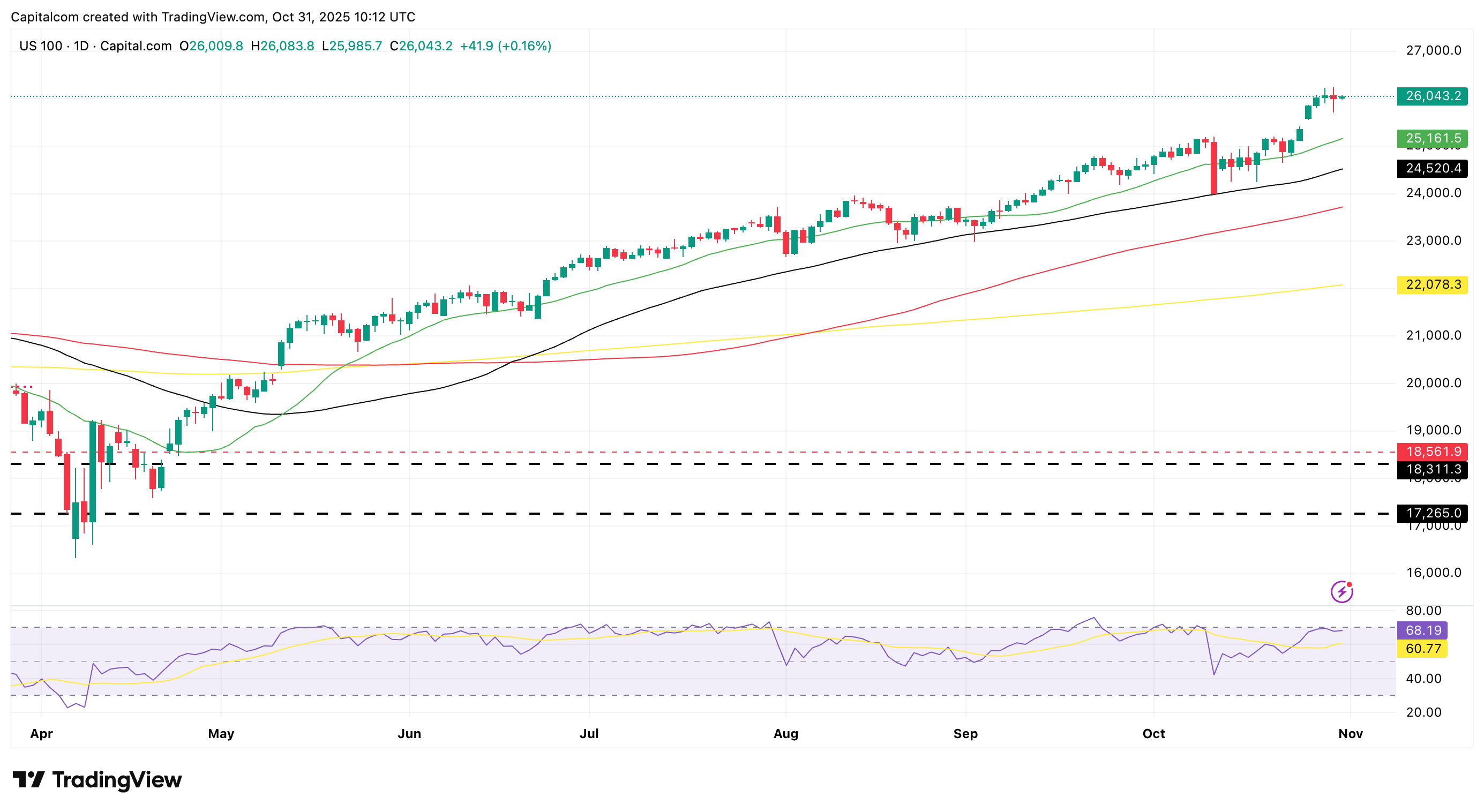Markets pull back as Fed eases rate cut hopes and tech faces reality check
Sentiment in US equity markets softens into the weekend as markets digest a busy week of information from the Federal Reserve and key tech earnings
Global markets have turned cautious towards the end of the week as the Federal Reserve tempered expectations for aggressive rate cuts and investors reassessed the lofty valuations driving Big Tech higher. The tone from Chair Jerome Powell struck a delicate balance — acknowledging softer labour data but cautioning that inflation remains well above target, leaving the central bank little room to commit to a clear easing path.
Fed cools market optimism
Only a week ago, markets were brimming with confidence that a string of rate cuts was imminent. That enthusiasm has since faded. Powell’s comments made clear that a December cut is not guaranteed, emphasizing the need for optionality as the Fed navigates mixed signals in the U.S. economy. Inflation, still holding near 3%, has proven stickier than hoped, while the impact of tariffs and shifting labour dynamics has complicated the outlook.
Policymakers are also grappling with uncertainty in the jobs data — the Fed has yet to receive updated official figures, leaving it partially flying blind. While growth remains strong, questions persist about the underlying cause of labour market softness. Without clarity, the Fed is reluctant to box itself in with premature rate guidance.
Powell’s measured tone had an immediate market impact. Equities pulled back as investors unwound some of their more aggressive bets on a deep 2025 easing cycle. The Fed’s goal, in effect, appears to be cooling the market’s optimism without derailing broader confidence — guiding rate expectations lower through language rather than policy moves.
Tech stocks hit mixed notes
The week’s earnings season added another layer of volatility. Meta disappointed investors with higher costs and a one-off tax hit that erased around 10% of its market value. Apple and Amazon offered more encouraging results, hinting that consumer and cloud demand remain resilient.
Still, the results underscore a broader challenge — expectations are sky-high. Any earnings miss or guidance downgrade now triggers an outsized reaction. Some tech valuations assume near-perfect growth trajectories, leaving little margin for error.
Despite the mixed signals, enthusiasm remains high across risk assets. The Magnificent Seven continue to anchor global equity gains, but signs of speculative froth are emerging elsewhere. Markets may need a cooling period. While the fundamental story behind AI and technological productivity remains strong, recent moves suggest some investors are running ahead of the data. For now, the central bank’s message is clear: policy easing will come, but not on the market’s timetable.
Nasdaq 100 daily chart

Past performance is not a reliable indicator of future results.